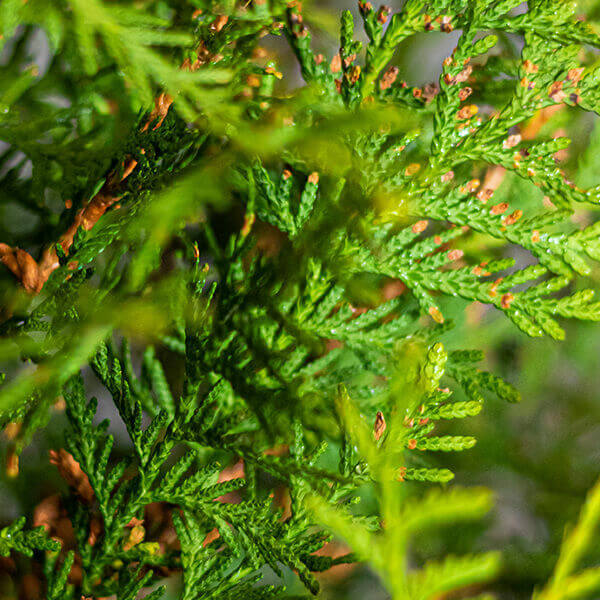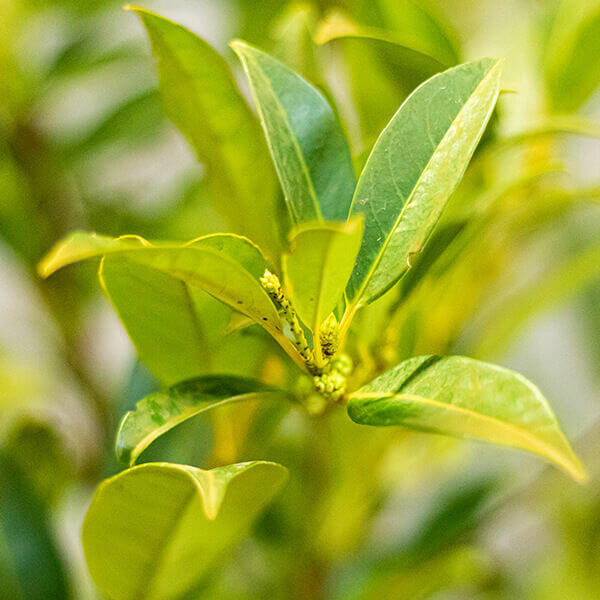Hedge Plants For Garden Rooms
Hedge Plants For Garden Rooms
Blog Article
Hedge Plants For Garden Design
Enhance your garden's allure with rich hedge varieties such as Yew (Taxus), Thuja, Laurel, Photinia, and Bamboo, celebrated for their structural stability and ecological benefits.
Yew and Thuja offer evergreen coverage and winter season resilience, while Laurel offers rapid development and broad, fragrant leaves.
Photinia adds seasonal charm with its vibrant red foliage, and Bamboo lends a low-maintenance, tranquil atmosphere.
These hedges improve air quality, decrease noise, and create tranquil, private areas.
Proper planting, spacing, and upkeep guarantee energetic development and ecological consistency.
Explore how these lush ranges can raise your garden's charm and well-being.
Secret Takeaways
Change Your Garden With Lush Hedge Varieties
- Select Yew for its dense, evergreen development and unparalleled durability.
- Opt for Laurel for its fast development and broad leaves, making sure fast personal privacy.
- Choose Photinia for its vibrant seasonal foliage, which turns a striking dark red.
- Use Bamboo for a low-maintenance, winter-hardy hedge with aesthetic appeal.
- Area plants 2-3 per meter and prune routinely for optimal growth and health.
Popular Hedge Plants
When transforming a garden with rich hedge ranges, it's necessary to consider popular hedge plants such as Yew, Thuja, Laurel, and Photinia due to their special qualities and advantages.
Yew (Taxus) is highly respected for its longevity and thick, green growth, making it a prime choice for enduring landscapes.
Thuja is kept in mind for its evergreen foliage and robust winter durability.
Photinia includes seasonal vibrancy with red leaves that darken in time, creating vibrant visual appeal.
Laurel uses fast development and aromatic, broad leaves, suitable for fast privacy.
Additionally, Bamboo is an exceptional choice for ambiance, offering a low-maintenance, winter-hardy choice that enhances the garden's visual with its elegant, swaying walking canes.
These choices deal with a range of horticultural requirements and choices.
Advantages of Garden Hedges
Garden hedges offer a wide variety of benefits, making them a valuable addition to any landscape. These natural barriers are affordable to carry out and provide considerable wind defense, boosting air blood circulation and adding to sound decrease. The dense foliage of hedges like Thuja and Beech guarantees personal privacy by blocking presence, creating a serene and secluded environment.
Hedges also play an essential function in microclimate regulation, providing a steady environment that fosters plant growth and decreases temperature level fluctuations. Their elaborate leaf structures filter pollutants, improving air quality and adding to a healthier garden ecosystem.
Additionally, hedges excel in noise decrease, taking in and deflecting sound waves to lower ambient noise levels. This dual functionality of supplying both acoustic and visual personal privacy improves the overall tranquility and visual appeal of any garden.
Planting and Maintenance Tips
For a successful hedge, meticulous preparation of the planting location is crucial. Make sure the soil has appropriate pH and drainage to support strong root development.
Space the plants appropriately for the chosen species. Water the hedge regularly throughout its initial development phase, changing as needed with seasonal changes.
Execute a systematic bug control and illness prevention method, using chemical or organic treatments when essential. Frequently examine for aphids, mites, and fungal infections.
Apply mulch to keep moisture and reduce weeds. Seasonal pruning promotes thick growth and air blood circulation, necessary for plant health.
Following these guidelines will help you cultivate a lively, well-maintained hedge that improves the charm of your garden.
Spacing and Trimming Guidelines
Spacing and Cutting Guidelines
Appropriate spacing and cutting are essential for cultivating healthy, aesthetically appealing hedges. Adequate spacing makes sure each plant receives adequate nutrients, light, and airflow.
Follow these standards for ideal hedge upkeep:
- Spacing: Position hedge plants 2-3 plants per meter to encourage robust development.
- Pruning Methods: Routine pruning is important for keeping desired hedge height and shape. Trim brand-new development in summer and cut back older wood throughout winter season.
- Seasonal Care: Adjust cutting methods and schedules according to seasonal requirements to guarantee plant health.
- Hedge Height: Routinely display and cut to keep the desired hedge height and attain consistent visual appeals.
Sticking to these actions will ensure your hedge thrives, improving both the appeal and functionality of your garden.
Selecting the Right Hedge
Picking the Right Hedge
Choosing the proper hedge includes evaluating factors such as mature height, foliage density, and environmental durability. Successful hedge plant choice needs comprehending each species' growth qualities and site-specific versatility.
For instance, Yew (Taxus) uses exceptional durability and dense growth, while Thuja is notable for its winter resilience. In addition, thinking about upkeep requirements is crucial; fast-growing species like Laurel or Privet demand routine cutting, whereas low-maintenance choices like Bamboo or Ivy might be more suitable for those looking for very little upkeep.
Ecological elements such as soil type, light accessibility, and moisture conditions ought to also guide the selection process. This careful approach ensures the picked hedges will grow, supplying both practical and aesthetic benefits to the garden landscape.
Shipment and Planting Advice
To guarantee your hedge plants prosper, they ought to be delivered by specialized carriers and planted promptly upon arrival.
Follow these necessary actions for successful planting:
- Soil Preparation: Enrich the soil with raw material to improve drain and nutrient material.
- Planting Depth: Develop a trench twice the width and equal to the depth of the root ball.
- Watering Techniques: Water completely after planting, keeping the soil regularly moist but not saturated.
- Mulching: Apply a layer of mulch to keep wetness and reduce weeds.
Client Support and Service
Given the crucial function of prompt help in horticultural pursuits, our client support group is readily available six days a week through telephone, e-mail, and social networks to provide skilled suggestions and promptly deal with any concerns. Their devotion to quick action times ensures consumer complete satisfaction by resolving inquiries associated with plant health, optimum planting methods, and upkeep schedules.

-------------------
6 days a week
Within 48 hours
Within 24 hours
This thorough assistance system, strengthened by a stellar 9.3/ 10 consumer score, highlights our commitment to boosting the gardening experience for each client.
Regularly Asked Questions
How Long Does It Consider Hedge Plants to Establish?
Hedge plants usually require one to 3 years to become completely established, with the precise duration differing by species and growing conditions.
Reliable care during this vital period is vital for robust development. Consistent watering, watchful weed control, and appropriate fertilizer application are critical in promoting strong root development.
For example, fast-growing types like Laurel may develop quicker, while slower-growing ranges such as Yew may take longer. Diligent upkeep speeds up the establishment procedure, resulting in healthy and dense hedges.
What Are the very best Hedge Plants for Personal Privacy?
The concern of the very best hedge plants for privacy includes examining evergreen and deciduous options.
Evergreen hedges like Thuja, Laurel, and Cypress supply year-round coverage, guaranteeing continuous personal privacy.
On the other hand, deciduous hedges such as Beech use seasonal privacy, shedding leaves in colder months.
Key maintenance ideas for personal privacy hedges consist of routine cutting, fertilizing in spring, and correct spacing-- normally 2 to 3 plants per meter.
Additionally, consistent watering and diligent weed removal are crucial for promoting healthy, dense growth.
Can Hedge Plants Attract Wildlife to My Garden?
Yes, hedge plants can attract wildlife to your garden by providing essential benefits like shelter, food, and nesting sites, thereby boosting regional biodiversity. Yew, holly, and laurel are outstanding for attracting birds, while ivy supports a range of pests.
Nevertheless, it is very important to note that there are some drawbacks, such as increased upkeep to manage pests and routine maintenance. Carefully picking and keeping hedge varieties can help stabilize these downsides and benefits, ultimately cultivating a sustainable and vibrant ecosystem in your garden.
Are There Any Blooming Hedge Plants Available?
Yes, there are flowering hedge plants readily available that can boost the appeal of your garden.
For instance, Elaeagnus, likewise referred to as Olive Willow, produces aromatic white flowers in the fall, adding a touch of beauty.
Photinia, another popular choice, showcases vibrant red leaves that mature into an abundant green, developing a dynamic visual result throughout the seasons.
To ensure these plants flourish, it's important to practice proper pruning techniques and seasonal maintenance, such as cutting brand-new development in the summer and cutting back in the winter season.
These procedures will help preserve the health and aesthetic appeal of your blooming hedges.
How Do I Avoid Pests in My Hedge Plants?
To prevent pests in hedge hedging plants plants, employ natural pest control techniques and preserve appropriate hedge care. Present helpful pests like ladybugs, which prey on harmful pests, to create a well balanced environment.
Frequently examine your hedges for indications of invasion and promptly remove any afflicted parts to avoid the spread. Make sure the health of your hedges by using balanced fertilizers and offering adequate water.
Make use of mulching to maintain soil wetness and correct spacing to decrease plant stress and promote robust development. These practices jointly help in reducing bug concerns and maintaining a healthy hedge.
Conclusion
In essence, choosing the right hedge varieties such as Yew, Thuja, and Laurel can transform any garden into a tranquil haven. These plants provide year-round plant, boost visual appeal, and deal practical benefits like noise reduction and wind defense.
Correct planting strategies, accurate spacing, consistent watering, and seasonal trimming are essential for optimum development.
Trusted shipment services and skilled consumer support ensure a seamless experience from purchase to planting, making it simpler than ever to elevate your outdoor area.
Garden hedges use a plethora of advantages, making them a valuable addition to any landscape. These natural barriers are cost-effective to carry out and offer significant wind protection, boosting air flow and contributing to noise decrease. The dense foliage of hedges like Thuja and Beech makes sure privacy by blocking exposure, creating a remote and serene environment.

Pruning Methods: Routine pruning is essential for maintaining desired hedge height and shape. Cut brand-new development in summertime and cut back older wood during winter.
Report this page